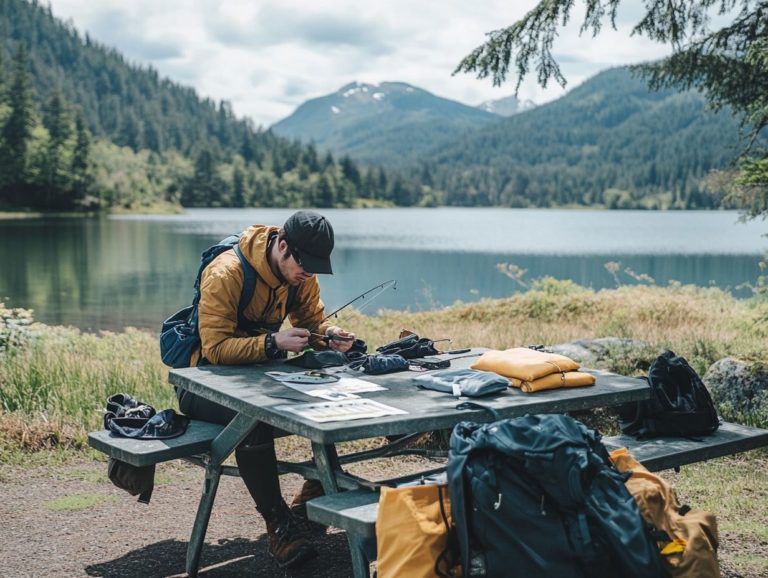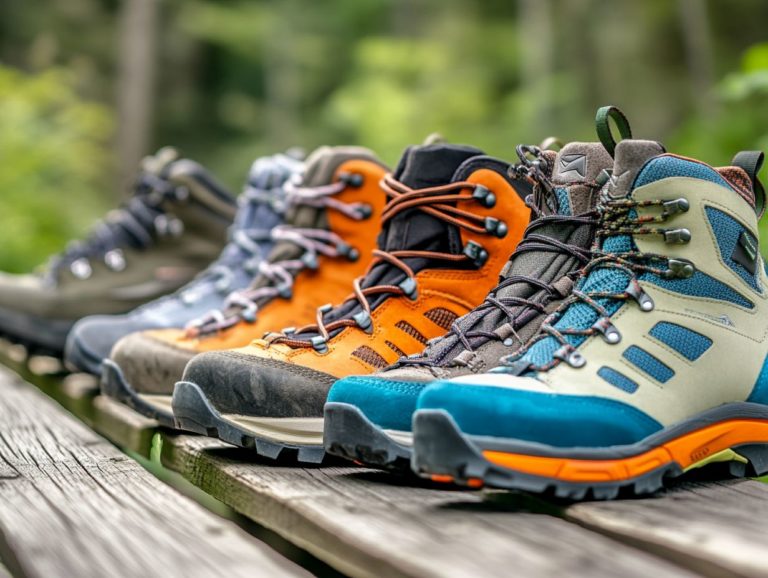5 Safety Tips for Outdoor Clothing Care
Taking care of your outdoor clothing is crucial for preserving its performance and extending its lifespan, especially when considering safety tips for various outdoor activities. Don t wait learn how to keep your outdoor gear ready for action!
With the right approach, your gear can brave the elements, ensuring you remain comfortable on every outdoor adventure. Here are five essential tips to wash and maintain your outdoor apparel effectively. By understanding fabric care labels and uncovering optimal cleaning methods, you can significantly enhance your clothing s durability and functionality.
Are you ready to prolong the life of your outdoor gear and ensure you are prepared for other outdoor risks? Let s dive in!
Contents
- Key Takeaways:
- 1. Always Check the Care Label Before Washing
- 2. Use the Right Detergent for the Fabric
- 3. Wash on a Gentle Cycle
- 4. Avoid Using Fabric Softeners
- 5. Air Dry Whenever Possible
- Why Is Proper Care Important for Outdoor Clothing?
- What Are the Different Types of Outdoor Fabrics and How Should They Be Cared For?
- Frequently Asked Questions
- What are the top 5 safety tips for outdoor clothing care?
- Why is it important to follow care instructions on outdoor clothing?
- What types of laundry soap should I use for outdoor clothing?
- Can I use hot water or high heat in the dryer for outdoor clothing?
- How do I prevent mildew and mold on outdoor clothing?
- What should I do if my outdoor clothing gets stained?
Key Takeaways:
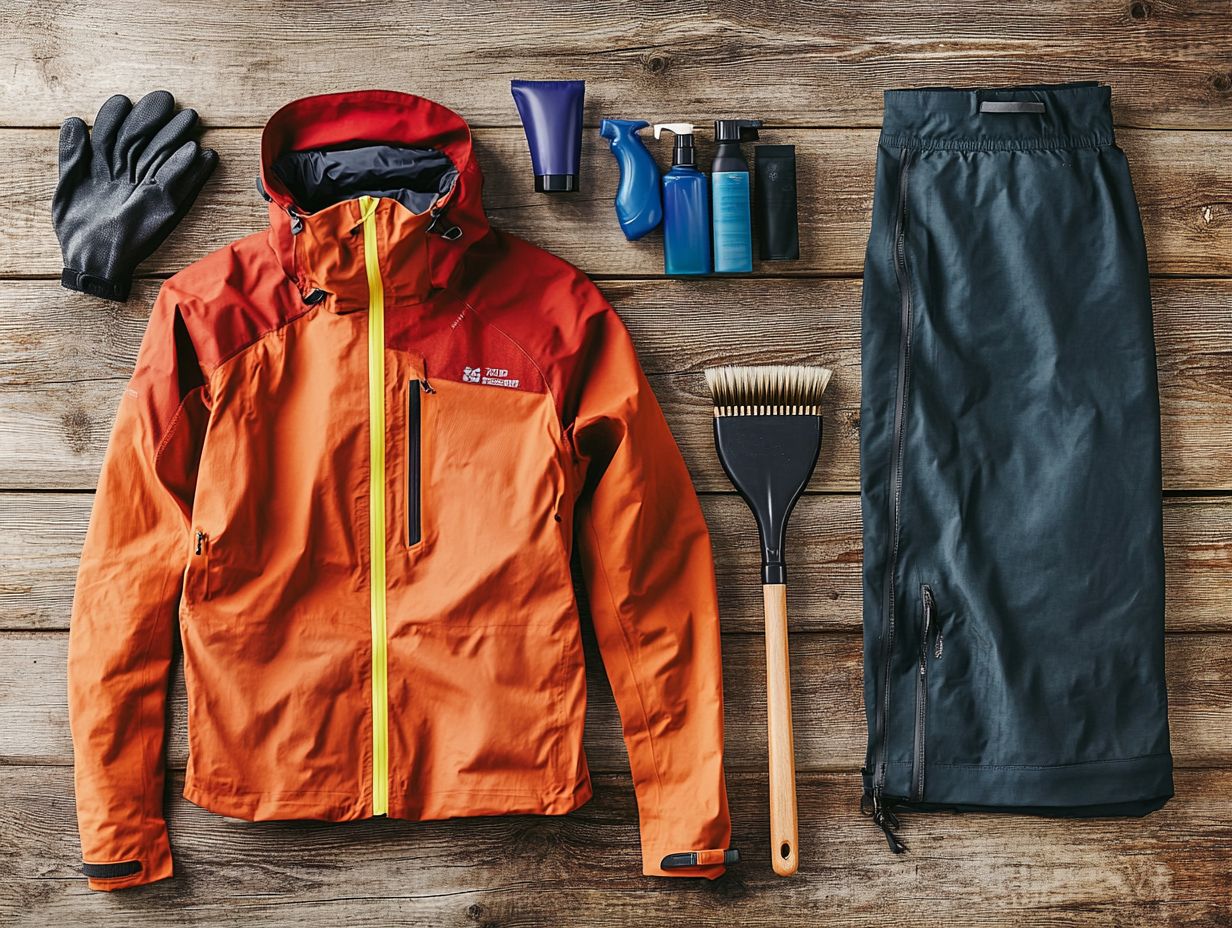
- Always check the care label before washing your outdoor clothing to ensure the proper cleaning method, especially for winter safety gear.
- Use a detergent specifically designed for the fabric of your outdoor clothing to avoid damage and enhance the performance of your outdoor gear.
- Wash on a gentle cycle to prevent wear and tear on your outdoor clothing, particularly those with waterproof features.
1. Always Check the Care Label Before Washing
Before you wash your outdoor clothing, always take a moment to check the care label for specific washing instructions. This simple step will help ensure the longevity of the fabrics designed for your outdoor adventures, whether you’re shoveling snow, enjoying a hike, or engaging in other outdoor activities.
These labels are treasure troves of information. They detail optimal temperature settings, recommended detergents, and drying methods essential for preserving the functionality of advanced materials.
Proper care goes beyond mere appearance; it plays a crucial role in the durability and functionality of garments equipped with water-repellent or insulated properties, important for preventing heat-related illnesses in extreme conditions. Overlooking these guidelines can lead to a breakdown of those vital features, diminishing your gear’s effectiveness when facing harsh conditions.
To truly maximize the potential of your outdoor wear, familiarize yourself with the symbols on the labels. This will help you correctly interpret washing and care instructions, maintaining peak performance for all your adventures.
2. Use the Right Detergent for the Fabric
Using the right detergent is essential for preserving the qualities of outdoor fabrics, especially for clothing meant for activities like snow removal, hiking, and other outdoor adventures. This choice helps maintain those all-important waterproofing and sun protection features.
Opting for a detergent specifically formulated for outdoor materials can significantly boost the performance and longevity of your gear. You’ll find various types available, including those tailored for special materials designed for outdoor activities, which often include enzymes that break down grime without stripping away essential treatments necessary for safety equipment.
Using conventional household detergents can lead to a buildup of residues that compromise these protective attributes, making your garments less effective against the elements. It’s crucial to recognize that choosing the wrong detergent not only diminishes effectiveness but also risks damage, potentially causing discoloration or degradation of the fabric over time.
3. Wash on a Gentle Cycle
Washing your outdoor clothing on a gentle cycle is crucial for preserving the integrity of the fabric, especially when these garments are designed for demanding activities like shoveling snow or hiking, where safety and performance are non-negotiable.
By opting for a gentle cycle, you ensure that the delicate fibers aren t subjected to harsh agitation that could lead to wear and tear, ultimately prolonging the life of your gear. This thoughtful approach also helps maintain the breathable properties that pull moisture away from your skin, essential for comfort in unpredictable weather conditions.
For various types of outdoor gear like insulated jackets or waterproof shells using the right settings, such as lower spin speeds or cold water, can enhance the effectiveness of your wash. This attention to detail not only preserves the fabric’s integrity but also significantly boosts the overall performance of your outdoor clothing.
Implement these tips to keep your outdoor gear performing at its best! Your adventures depend on it!
4. Avoid Using Fabric Softeners
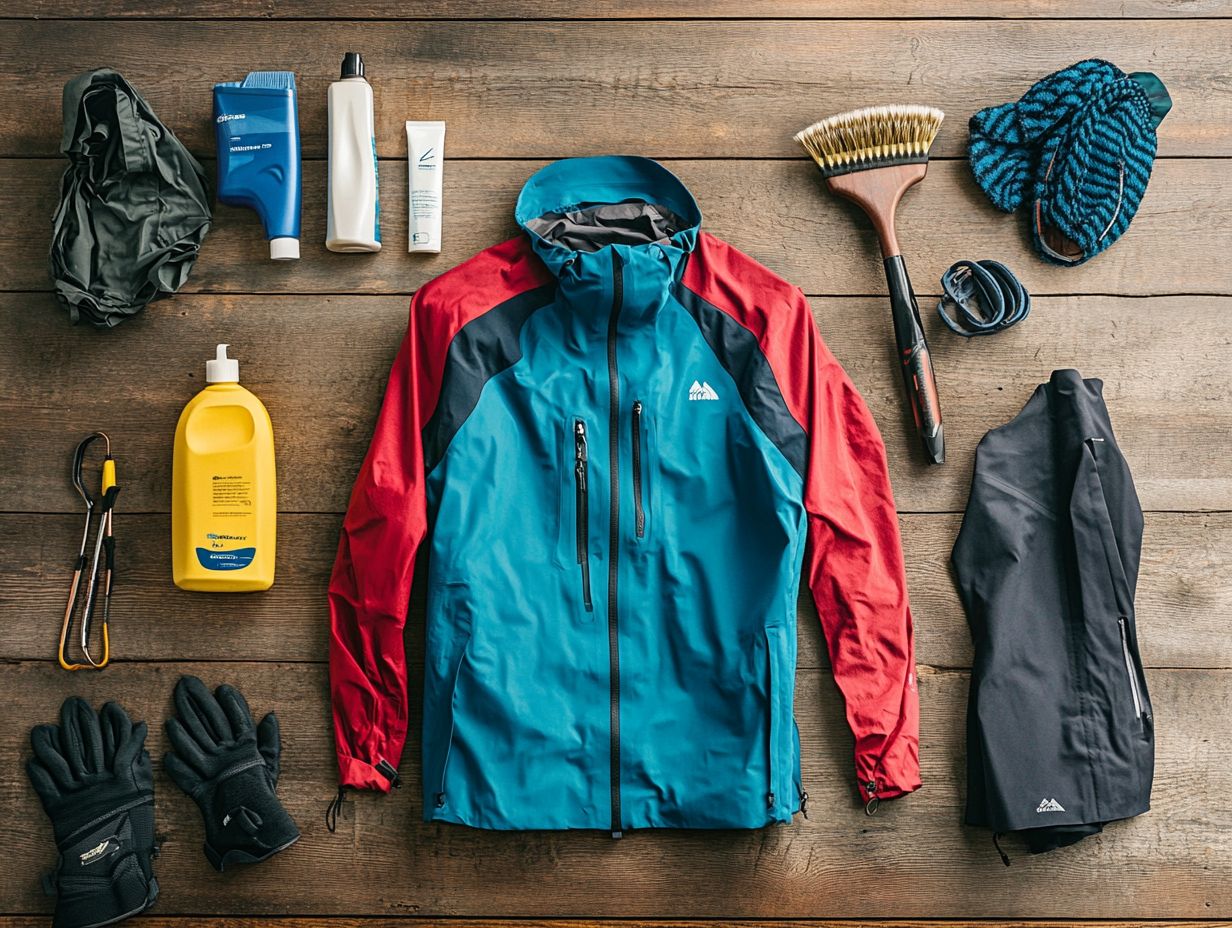
Avoiding fabric softeners when washing your outdoor clothing is essential. These products can leave residues that compromise the effectiveness of moisture-wicking the ability to pull sweat away from your body and waterproof features, which are crucial for activities like hiking or shoveling snow.
When residues accumulate, they hinder the fabric’s ability to repel water and wick away sweat. This impacts your performance and may shorten your gear’s lifespan.
Instead of reaching for fabric softeners, consider alternatives like vinegar or specially formulated sports detergents. These options effectively clean your gear without leaving harmful deposits, ensuring your outdoor clothing maintains its integrity and continues to feel soft against your skin.
5. Air Dry Whenever Possible
Air drying your outdoor clothing whenever possible is a smart choice to prevent damage from high heat. This practice ensures that your winter gear and adventure gear maintain their durability and functionality.
Not only does air drying minimize the risk of fabric shrinkage and color fading, but it also plays a vital role in preserving the breathability essential for high-performance gear. When you opt for air drying, the construction and materials remain intact.
This allows optimal moisture-wicking properties to perform at their best. By steering clear of the harsh conditions of machine drying, you can extend the lifespan of your gear.
Air drying ensures it s always ready for your next adventure whether you re navigating rugged terrains or facing unpredictable weather. Ultimately, air drying offers a gentler approach that respects the integrity of your gear designed for exploring the great outdoors. Ensure your gear is always adventure-ready!
Why Is Proper Care Important for Outdoor Clothing?
Proper care of your outdoor clothing is essential for preserving its functionality and safety features, especially when you’re out hiking, shoveling snow, or camping where bug bites and ticks are concerns. Without adequate protection and hydration, exposure to the elements can lead to heat illness or other risks you d rather avoid.
By ensuring that each garment is washed and dried correctly, you help maintain the integrity of materials designed to wick moisture away from your body. This simple act can prevent overheating and discomfort during your most strenuous outdoor adventures, protecting you from risks like heat stroke.
Regular maintenance, like reapplying water-resistant treatments to protect your gear from getting soaked in rain or snow, and wearing protective clothing, keeps you shielded from unexpected downpours or snow. These careful habits enhance the durability of your clothing and extend its usable life.
A well-maintained wardrobe means you can focus on your adventures, confident that your gear will perform at its best when you need it the most.
What Are the Different Types of Outdoor Fabrics and How Should They Be Cared For?
Understanding the various types of outdoor fabrics and their specific care requirements is essential for anyone embarking on outdoor adventures. Each material has unique properties that dictate the ideal cleaning methods necessary to uphold durability and performance, ensuring they remain safe for activities like shoveling snow and hiking.
You ll often encounter fabrics like nylon, polyester, and cotton blends in outdoor gear, each thoughtfully engineered to endure diverse weather conditions and rigorous use. Nylon, with its lightweight and quick-drying prowess, is a popular choice for backpacks and tents, thanks to its impressive strength-to-weight ratio.
Conversely, polyester shines with its UV resistance and color retention, making it the go-to for outdoor cushions and apparel. Cotton blends, while somewhat less water-resistant, provide breathability and comfort, perfect for laid-back outdoor wear.
To keep these materials performing at their best, it s imperative to adhere to specific care instructions, such as employing gentle washing techniques and steering clear of harsh detergents. This attention to detail ensures that your gear maintains its integrity over time, ready for every adventure ahead, including those in the Texas outdoors where awareness of poisonous plants is crucial.
Keep these tips in mind to make sure your gear is always ready for your next big adventure!
How Can Improper Care Affect the Performance of Outdoor Clothing?
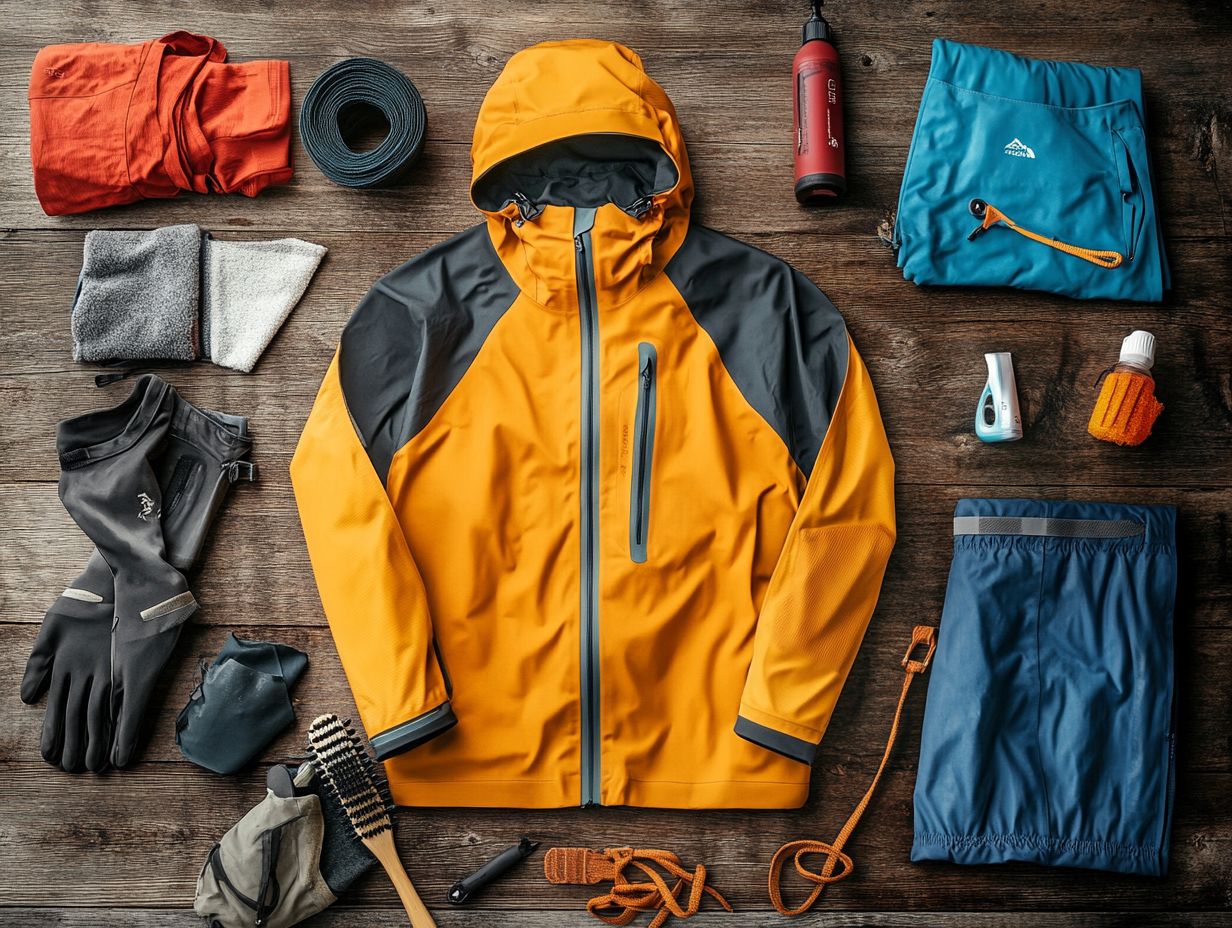
Improper care of your outdoor clothing can seriously compromise its performance. This can lead to weakened waterproofing, diminished insulation, and increased wear-and-tear. These issues can create risks during outdoor activities, whether you’re shoveling snow or enjoying a hike.
If you neglect to wash your jacket according to the manufacturer’s instructions, you might find that it loses its ability to keep water out, leaving you vulnerable to chilly temperatures and moisture. Similarly, if you don’t store your base layers properly after use, you could end up with a buildup of bacteria that leads to unpleasant odors and skin irritations.
Cranking up the heat in the dryer can weaken the fabric fibers, resulting in premature rips and tears. These seemingly minor oversights can dramatically impact both performance and safety in the great outdoors. It underscores the necessity of diligent garment care and an understanding of outdoor clothing care symbols to avoid work-related illness.
What Are Some Common Mistakes to Avoid When Washing Outdoor Clothing?
When washing your outdoor clothing, it’s essential to avoid several common mistakes that can lead to irreversible damage. Using the wrong detergents, neglecting to check care labels, or skipping air drying can compromise the safety and functionality of your gear during outdoor adventures.
These oversights not only threaten the integrity of the fabrics but also diminish key performance features like waterproofing and the ability of the fabric to let air in. For instance, if you reach for regular laundry detergent, you might unknowingly leave a residue that clogs pores or erodes those all-important weather-resistant coatings. To ensure your gear lasts, it’s crucial to understand how to care for outdoor clothing fabrics. Failing to read the care labels could lead you to use high heat during drying, warping materials and causing shrinkage.
To prevent these pitfalls, it’s crucial for you to select detergents specifically formulated for technical fabrics. Consistently adhere to care instructions, and choose air drying whenever possible. Additionally, consider tips for staying dry in outdoor clothing. This approach will help you maintain the longevity of your essential gear, keeping your gear adventure-ready for your next big trip!
How Can One Extend the Lifespan of Their Outdoor Clothing?
Extending the lifespan of your outdoor clothing involves a thoughtful combination of proper care techniques. By using gentle washes, avoiding harsh chemicals, and storing your gear correctly, you can ensure that garments made from durable materials remain effective for years of outdoor adventures.
To achieve this, you should always read the labels for specific washing instructions tailored to each material. Certain fabrics may require special treatment to maintain their water-resistance or breathability. For more insights, check out these tips for choosing the best outdoor clothing fabric. Employing mild detergents can prevent the breakdown of fabric fibers, while opting for air drying instead of using a dryer will protect the integrity of your clothing.
Regarding storage, keep your items in a cool, dry place, ideally away from direct sunlight, to help prevent fading and potential moisture damage. For those planning trips, consider these 6 tips for packing light with outdoor clothing. Regularly checking for signs of wear allows you to make prompt repairs, ensuring you can rely on your gear for countless excursions ahead.
What Are Some Alternative Methods for Cleaning Outdoor Clothing?
Exploring alternative methods for cleaning your outdoor clothing can lead you to effective solutions that preserve fabric integrity while being kind to the environment. Consider using vinegar or baking soda for natural cleaning no harsh chemicals required!
These alternatives not only tackle stubborn stains but also banish odors without harming the fabric. For instance, mixing vinegar with water creates a natural fabric softener and deodorizer, while baking soda acts as a gentle abrasive for tougher grime. You might also want to try citrus-based cleaners, which enhance the freshness of your outdoor gear without the risks linked to synthetic detergents.
By incorporating these solutions into your regular laundry routine, you can protect both your gear and the environment! Remember to take care of your gear today!
Frequently Asked Questions
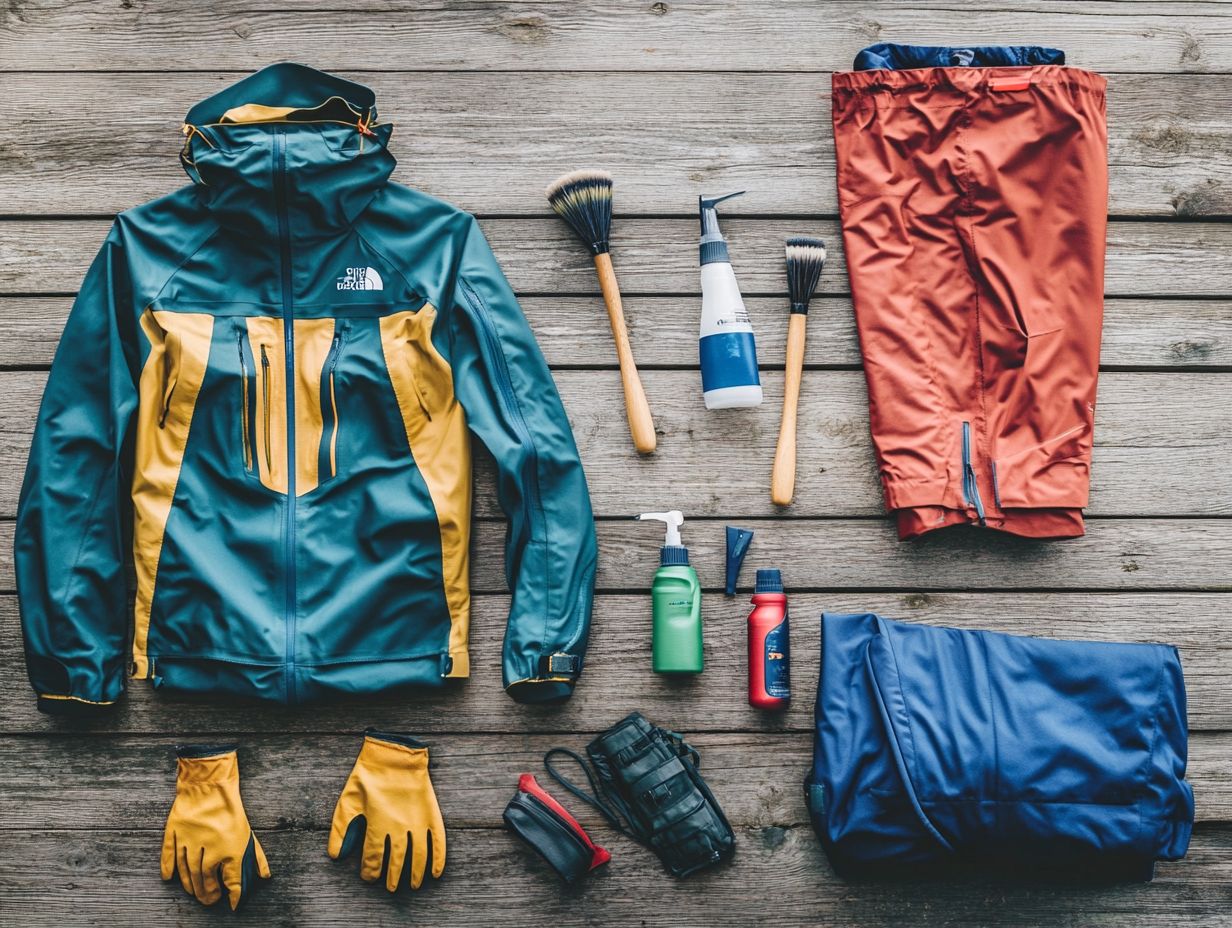
What are the top 5 safety tips for outdoor clothing care?
The top 5 safety tips for outdoor clothing care are:
1. Always read and follow the care instructions on the clothing label.
2. Use the correct type of laundry soap for the fabric and wash cycle.
3. Avoid using hot water or high heat in the dryer to prevent shrinking or damaging the fabric.
4. Hang dry or air dry outdoor clothing whenever possible.
5. Store your clothing in a cool, dry place to prevent mildew and mold.
Why is it important to follow care instructions on outdoor clothing?
Following care instructions is essential for maintaining your clothing. Each fabric and garment may have specific care needs to ensure quality and longevity.
Not following care instructions can result in shrinking, fading, or other damage.
What types of laundry soap should I use for outdoor clothing?
The type of laundry soap to use for outdoor clothing depends on the fabric and wash cycle.
For delicate fabrics, like silk or lace, use a gentle or mild laundry soap.
For tougher fabrics, use a heavy-duty or sports laundry soap.
Always avoid using fabric softeners, bleach, and other additives as they can damage the fabric.
Can I use hot water or high heat in the dryer for outdoor clothing?
No, it is not recommended to use hot water or high heat in the dryer for outdoor clothing.
This can cause shrinking, fading, or damage to the fabric.
It is best to use low heat or hang dry outdoor clothing to preserve its quality.
How do I prevent mildew and mold on outdoor clothing?
To prevent mildew and mold, store your clothing in a cool, dry place. If the clothing becomes damp, allow it to air dry completely before storing.
Additionally, wash and dry the clothing before storing it for long periods.
What should I do if my outdoor clothing gets stained?
Act quickly! Treat stains as soon as they happen to keep your outdoor gear looking brand new.
Blot the stain with a clean cloth or paper towel to remove any excess.
Then, follow the care instructions on the clothing label to treat the specific type of stain.
Avoid using hot water or high heat in the dryer until the stain is completely removed.

